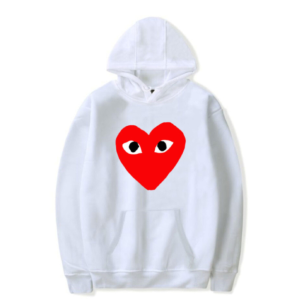Comme des Garçons has become synonymous with fearless experimentation, radical creativity, and uncompromising individuality in the world of fashion. Since its founding in 1969 by Rei Kawakubo, the brand has challenged the boundaries https://commedesgarconsco.de/ of design and redefined what fashion could be. What began as a small Japanese label has now transformed into a global movement, shaping not just garments but also the very philosophy of style itself. Comme des Garçons is not merely a clothing brand; it is a cultural force that constantly pushes fashion beyond convention.
The Origins of Comme des Garçons
The story of Comme des Garçons begins in Tokyo, where Rei Kawakubo, who initially studied fine arts and literature, established the brand in 1969. The name, meaning “like boys” in French, was chosen deliberately to convey a rejection of traditional femininity. Kawakubo’s earliest designs subverted conventional ideas of beauty by incorporating asymmetry, deconstruction, and monochromatic palettes. At a time when Western fashion was dominated by glamour and extravagance, her stark, almost austere collections stood out as radical and unsettling.
Her debut in Paris in 1981 cemented her reputation as a fashion revolutionary. Models walked down the runway in distressed fabrics, oversized silhouettes, and unconventional cuts, sparking controversy and fascination in equal measure. Fashion critics labeled the show as “Hiroshima chic,” a term that underscored both the shock value and the power of her uncompromising vision. From that moment, Comme des Garçons became the ultimate symbol of avant-garde fashion.
Rei Kawakubo: The Visionary Behind the Brand
At the heart of Comme des Garçons is Rei Kawakubo, a designer whose influence extends far beyond clothing. Known for her elusive personality and refusal to conform to industry norms, Kawakubo treats fashion as a philosophical inquiry rather than a commercial endeavor. She believes in creating designs that provoke emotion, challenge perceptions, and spark conversation.
Her collections are often built around themes of duality: life and death, beauty and imperfection, structure and chaos. Kawakubo’s refusal to follow trends or please the masses has turned Comme des Garçons into a brand admired for its integrity. She once famously stated, “I am not interested in clothes. I am interested in ideas.” This mindset has led to collections that function more like art installations than seasonal fashion releases.
The Aesthetic: Deconstruction and Innovation
Comme des Garçons’ signature aesthetic is built upon deconstruction, experimentation with form, and a rejection of symmetry. Unlike traditional fashion houses that emphasize figure-enhancing cuts and polished tailoring, Kawakubo embraces imperfection. Her designs often feature raw edges, holes, exaggerated proportions, and unconventional materials.
This approach paved the way for new movements within the fashion world, influencing countless designers who followed. By dismantling preconceived notions of beauty, Comme des Garçons pioneered what would later be recognized as anti-fashion—a movement that values intellectual engagement and artistic expression over traditional glamour.
Another hallmark of the brand is its monochromatic color palette, particularly black. Kawakubo transformed black into a canvas for expression rather than a symbol of mourning or simplicity. Through layering, texture, and structure, she created depth and complexity within a single color, establishing black as the ultimate form of elegance and rebellion.
Global Expansion and Cultural Influence
What began in Tokyo soon grew into a global empire. Comme des Garçons opened its first Paris boutique in 1982, introducing the world to Kawakubo’s unique perspective. Over the decades, the brand has expanded into multiple lines, each catering to different audiences but all unified by a spirit of innovation.
Comme des Garçons Homme, Comme des Garçons Play, and Comme des Garçons SHIRT represent different facets of the brand, ranging from luxury tailoring to casual streetwear. The iconic heart logo with eyes, designed by Filip Pagowski, became a global symbol of quirky sophistication, making Comme des Garçons recognizable even to those unfamiliar with avant-garde fashion.
The brand also created Dover Street Market, a concept store that reimagined retail as an immersive experience. By combining fashion, art, and culture under one roof, Dover Street Market became an influential hub that reshaped how we perceive shopping.
Collaborations and Mainstream Breakthroughs
Despite its avant-garde reputation, Comme des Garçons has frequently collaborated with mainstream brands, bridging the gap between high fashion and streetwear. Collaborations with Nike, Converse, and Supreme introduced the brand to younger generations while maintaining its experimental edge.
One of the most iconic collaborations remains with Nike’s Air Force 1 and Converse Chuck Taylor, where Kawakubo’s distinctive design language merged with timeless footwear silhouettes. These collaborations allowed Comme des Garçons to remain relevant across decades, appealing to both collectors and casual fashion enthusiasts.
By merging exclusivity with accessibility, the brand has managed to maintain its position at the cutting edge of fashion while also becoming part of everyday wardrobes around the world.
Comme des Garçons at the Met Gala and Beyond
Comme des Garçons’ influence reached new heights when the Metropolitan Museum of Art’s Costume Institute dedicated its 2017 Met Gala exhibition to Rei Kawakubo. Titled Rei Kawakubo/Comme des Garçons: Art of the In-Between, the exhibition showcased her most groundbreaking designs and cemented her status as one of the most important designers in fashion history.
The exhibition reinforced the idea that Kawakubo is not merely a fashion designer but also a cultural philosopher whose work transcends clothing. Her ability to blur the boundaries between fashion and art continues to inspire designers, artists, and thinkers alike.
Legacy of Fearlessness
The true legacy of Comme des Garçons lies in its unwavering fearlessness. While many brands chase commercial trends, Kawakubo has stayed committed to her vision, even when it alienates audiences. This commitment has earned her not just respect, but also a loyal following that values authenticity over conformity.
Comme des Garçons has redefined what fashion can be: a medium for storytelling, social commentary, and intellectual exploration. Every collection becomes an invitation to question norms, embrace imperfection, and celebrate individuality.
The Future of Comme des Garçons
As the brand evolves, Rei Kawakubo continues to guide it with the same radical spirit that defined its beginnings. Younger designers, including her protégé and husband Adrian Joffe, play an important role in expanding the brand’s global influence. With new lines, innovative retail spaces, and ongoing collaborations, Comme des Garçons shows no sign of slowing down.
In a fashion world increasingly driven by algorithms and fast trends, Comme des Garçons stands as a reminder that creativity and authenticity will always transcend commercial pressures. The brand’s ability to challenge expectations ensures its continued relevance in both fashion and culture.
Conclusion
Comme des Garçons is more than a brand; it is a philosophy of radical innovation and creative defiance. From its controversial beginnings in Tokyo to its recognition at the Met Gala, the label has consistently proven that fashion is not just about clothes but about ideas. Rei Kawakubo’s vision continues to inspire and disrupt, ensuring that Comme des Garçons remains fashion’s most fearless innovator.




